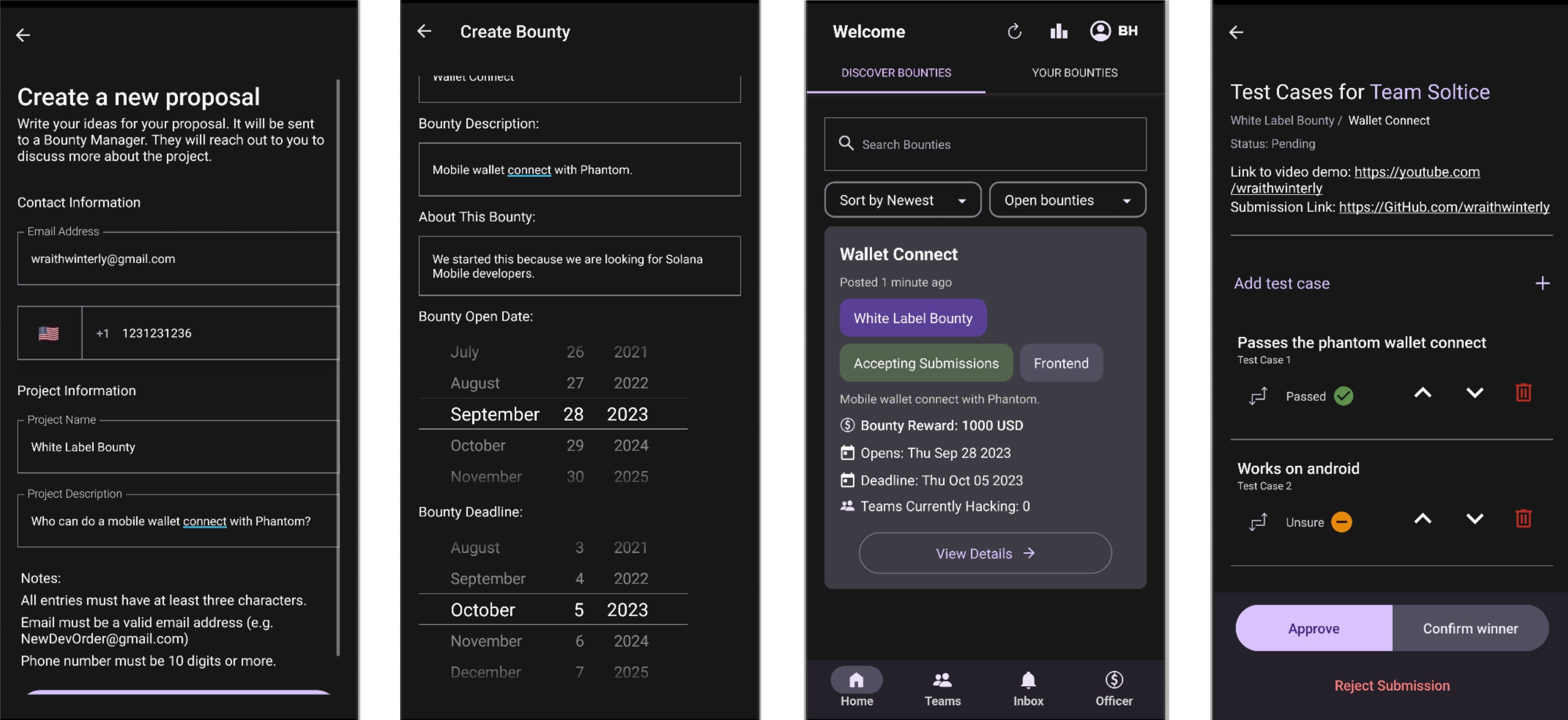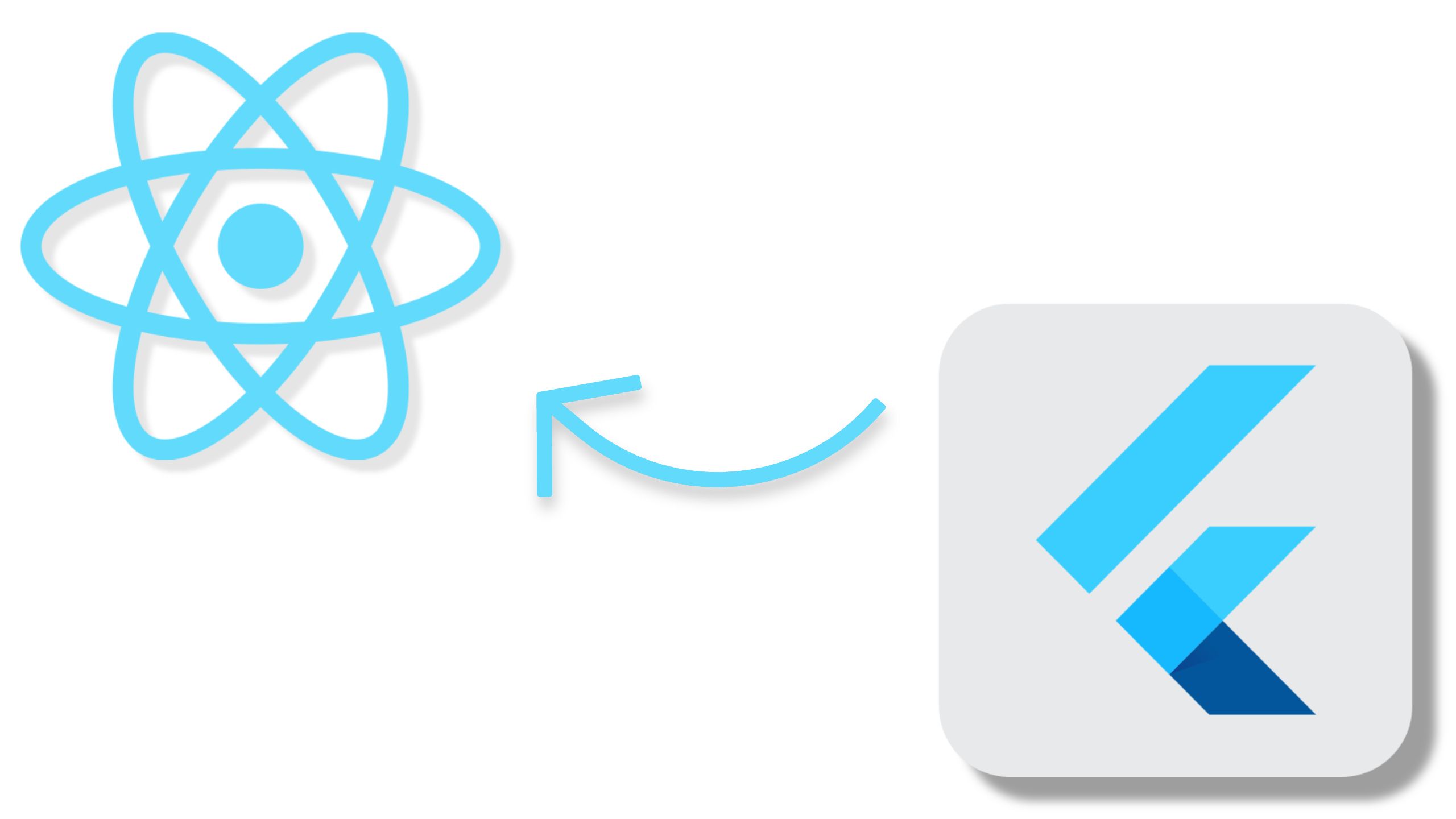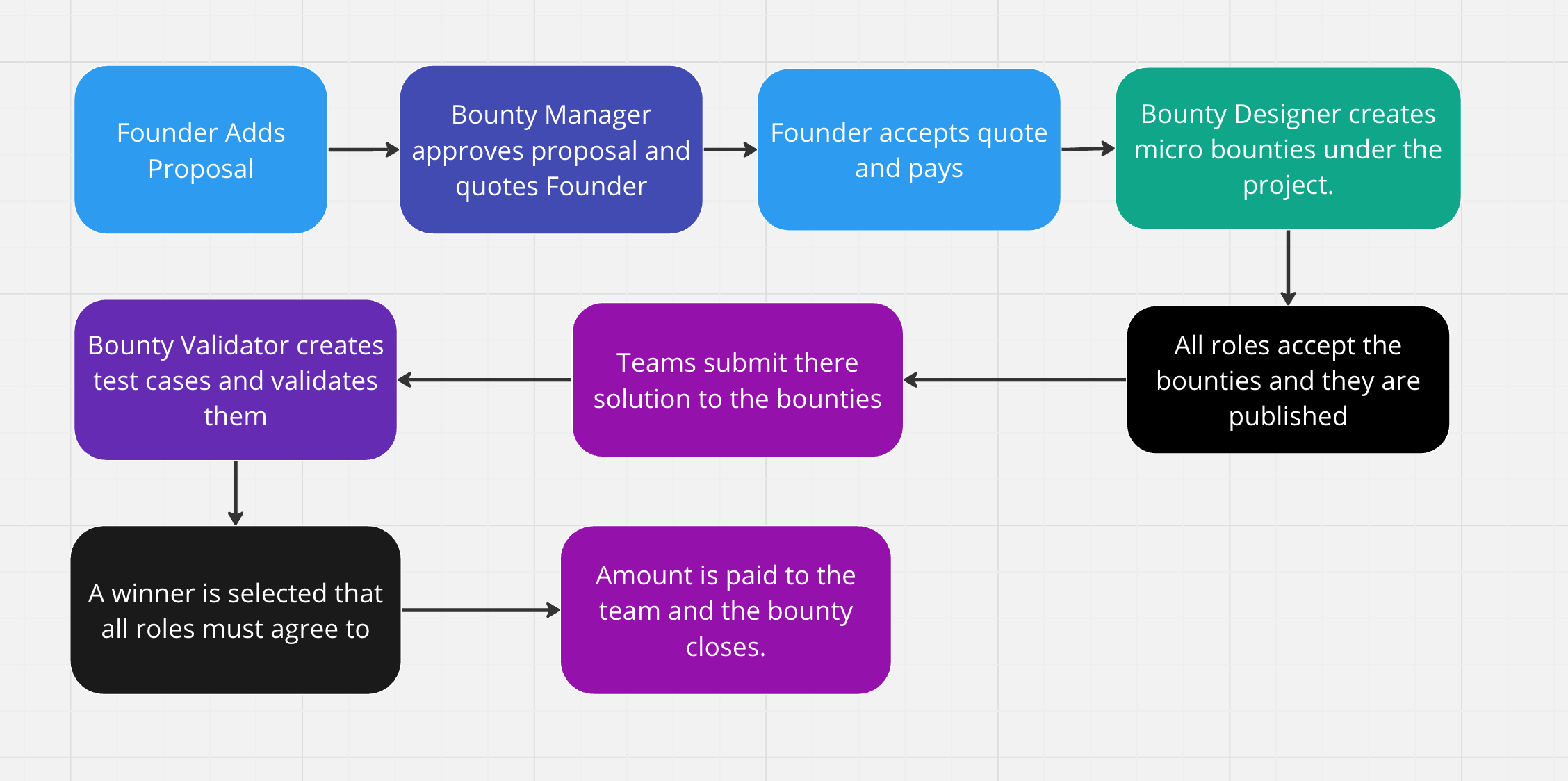
New Dev Order
In a challenging environment where the VC funds were going down at an alarming rate, many founders found themselves with a frustrating paradox: an abundance of tech talent and an inability to find the right fit for their needs. A revolutionary solution was needed for the digital space.
Jun - Sep 2023
Full Stack • Web3 • AndroidAbout
React Native Mobile Application Developer
Google Cloud Engineer
Ayden Springer, Robert Whetsel, Manish Andankar,
Ian, Rocky Nguyen, Christina Vu, Paul, Kit Baroness
Frontend: React Native
Backend: Node.js, Google Compute Engine, Firestore
Background:
New Dev Order is led by Dr Robert Whetsel. With a 40-year career, he has a huge role in computer science, leading significant web3 and Department of Defense projects. He played a central role in the US federal government's historic network consolidation and has been extrermely important in projects worth up to $19 billion. Beyond government work, Dr. Whetsel advises on AI, Web3 and founder technologies across academia and the industry.
Problem:
There's a glaring mismatch of talent . Founders are desperate to find a proficient fit for their needs, and the tech industry had pulled approximately 340,000 jobs in the preceding year.
Solution:

Enter NDO - New Dev Order. With a decentralized community platform, this community bridged the gap between founders looking for tech talent and tech professionals searching for meaningful work. Through organized hackathons , both founders and tech "bounty hunters" could interact, learn, and collaborate to build impactful digital solutions - leveling up their skills and their founders' needs.
Flutter vs. React Native: Why React Native Emerged as the Preferred Choice for NDO

When it came to building the mobile application for New Dev Order (NDO), a pivotal decision was choosing the right development framework. The debate centered around two main performers in the mobile app development arena: Flutter and React Native . While both have their unique strengths, for NDO's specific requirements, React Native stood out for various reasons.
Native Components:
- React Native offers a genuine native experience . Remember, these native components are built by Apple and Google for their devices.
Impact for NDO:
- Confident in delivering an application that felt smooth, responsive, and native to each platform it targeted. That way, we can lead our users on a friendly platform.
Wider Adaptation:
- Wide adoption across many industry giants such as Instagram, Airbnb, and UberEats .
- Speaks volumes about its reliability and scalability .
NDO’s Perspective:
- Opting for a tried-and-tested route.
- Minimized risks associated with lesser-known challenges or bottlenecks.
- Issues with Flutter were quickly noticed.
NDO's Savings:
- Ability to reuse code ensured that development was swift.
- The reduced development time directly translated to financial savings.
Integration with Solana & Faster Release Dates:
- Ability to integrate with various decentralized technologies and backends
Why not Flutter specifically?
- Integrating with native modules can be more challenging in Flutter.
- Flutter relies on Dart posing a steeper learning curve for devs.
- Flutters non-native components are buggy and not built correctely .
Global State Management:
I chose Zustand over Redux for managing global state across multiple screens in React Native because Zustand offers a simpler, more lightweight approach. Unlike the boilerplate-heavy Redux, Zustand provides a straightforward setup without the need for reducers or action types. This makes the code more concise, improves maintainability, and speeds up development time , making Zustand a more efficient choice for this particular application.
Design System
I utilized reusable button, text, and dropdown components throughout the app to ensure consistency in design and user experience . By doing so, I was able to integrate features like skeleton animations and loading symbols seamlessly across different parts of the application. This approach not only enhances the app's aesthetic and functional uniformity but also streamlines the development process , promoting efficient code reuse and easier maintenance. I used a colors file that the app follows to be able to instantly update the design.
Operational Flow:

- Founders could pitch their projects on the platform.
- A bounty manager would provide a quote for the project.
- Upon payment, bounty designers would conceptualize the bounty.
- All roles (from founders to validators) would approve the bounty details.
- The bounty is then released for bounty hunters and their teams.
- Teams compete to win the bounty by providing the best solution.
Results:
In a short span of two months, a working MVP was designed and deployed using React Native and Google Cloud platform . This MVP enabled founders to not only list their projects but also see them to fruition through the community of bounty hunters. The whole workflow, from project conceptualization to competition amongst developers, was streamlined and efficient.
My Personal Impact:
I played an extremely important role in the project's delivery. As the sole team member with the specialized knowledge to configure the Google Cloud Platform, including setting up virtual machines, servers, and the database, my contributions were vital to the MVP. My ability to develop the app from the ground up not only ensured the project's delivery within two months , but also resulted in significant financial savings for the company . The company was able to efficiently allocate resources and achieve timely product delivery.
Conclusion:
NDO offers a unique solution to a prevalent problem. By centralizing the decentralized, it has crafted a niche where tech talent meets opportunity, all the while saving costs and fostering collaboration and allowing developers to level up their skills.


Send me a message!
Ready to take your project to the next level? Reach out to me and let's get the conversation started. Realize your success journey today.